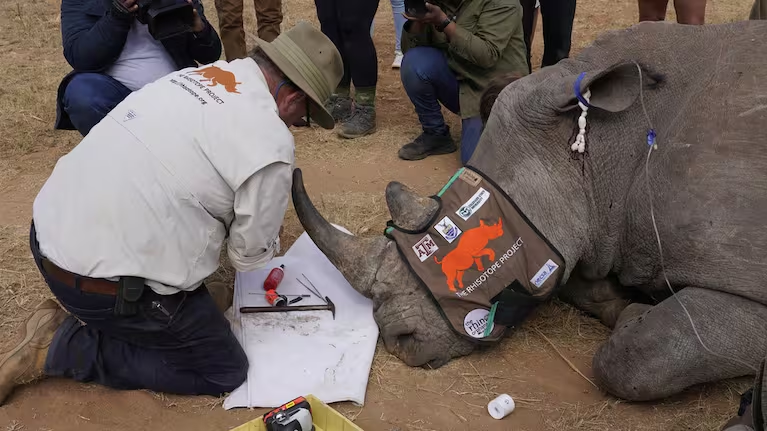“In South Africa, biologists and scientists have found a new way to deter rhino poaching while allowing the animals to keep their horns intact.
Previously, rhinos were often captured and their horns removed to discourage poachers, but this harmed their social structures.
Now, researchers in Limpopo province have embedded radioactive isotopes into rhino horns. These isotopes emit radiation that can trace anyone who handles the horn, even after it’s been removed from the rhino.
This method, developed by nuclear researchers at the University of the Witwatersrand, takes advantage of global radiation monitors designed to prevent nuclear terrorism.

Professor James Larkin, leading the project, explained, ‘This innovation helps intercept trafficked horns at international borders.’
He emphasized the urgent need for new poaching prevention methods, as South Africa continues to lose many rhinos each year.
Professor Nithaya Chetty from Witwatersrand assured that the radioactivity’s impact on rhinos has been extensively tested and found to be minimal.
Unlike ivory from elephants, which is used for art, rhino horn is trafficked to Asia under false beliefs of medicinal benefits.”
